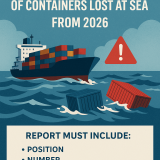Turkey has finally banned the toxic aircraft carrier SÃO PAULO from entering its national waters for scrapping. For weeks, local environmental and labor rights groups, supported by international NGOs, have been protesting the voyage of the vessel from Brazil to Aliağa, demanding compliance with the Basel and Barcelona Conventions.
“From a marvelous public march with participation of thousands of people in Aliağa to theatrical demonstrations in the center of İzmir and public statements in front of official buildings, all people came together around the one single demand: to stop this toxic ship,” says Gokhan Ersoy, Project Development Officer at Greenpeace Mediterranean.
“Digital and conventional signature petitions reached more than 150.000 people within a month! The will and never-ending commitment of people forced policy makers to reconsider the mistake they had made.”
The decision by Murat Kurum, Turkish Minister of Environment, City and Climate Change, comes after a Brazilian Federal District Court injunction to stop the departure of the ship was not enforced, and the Brazilian government and the buyer of the vessel failed to produce and submit a second Inventory of Hazardous Material (IHM) in order to properly identify the amounts of toxics onboard the ship.
Indeed, a second audit was deemed necessary by Turkey after environmental and human rights organizations challenged the validity of the first one.
“The extraordinary resistance against the export of this ship comes at a moment of intensive environmental damage to this part of the world because of the ‘open door’ waste policy of the Turkish government,” says Asli Odman of Istanbul Health and Safety Labour Watch.
“No environmental or social dumping should be allowed to be able to put the environmental standards on a firm ground. Thus, our struggle is not only a national one.”
Following the cancellation of Turkey’s consent to the transboundary movement, IBAMA (Brazilian Institute for the Environment and Renewable Natural Resources) has issued a letter to Oceans Prime Offshore Agenciamento Maritimo Ltda, the exporting company working with the buyer SOK, to arrange the immediate return of the SÃO PAULO to Brazil.
However, to date, the company in control of the vessel has not yet provided information regarding the route change.
“Together with the Basel Action Network (BAN), BAN Asbestos France, Henri Pézerat Association (Work, Health, Environment), International Ban Asbestos Secretariat (IBAS), İstanbul Isig Meclisi, Greenpeace Mediterranean and Brazilian ABREA (Associação Brasileira dos Expostos ao Amianto), the NGO Shipbreaking Platform is now calling for the governments of Morocco, Spain, and the UK to immediately halt the vessel should it attempt to cross the Strait of Gibraltar,” says Nicola Mulinaris of the NGO Shipbreaking Platform.
“There is no doubt that we are witnessing a clear case of illegal traffic.”
Source: https://maritimefairtrade.org/turkey-bans-entry-of-toxic-aircraft-carrier-sao-paulo-for-scrapping/






